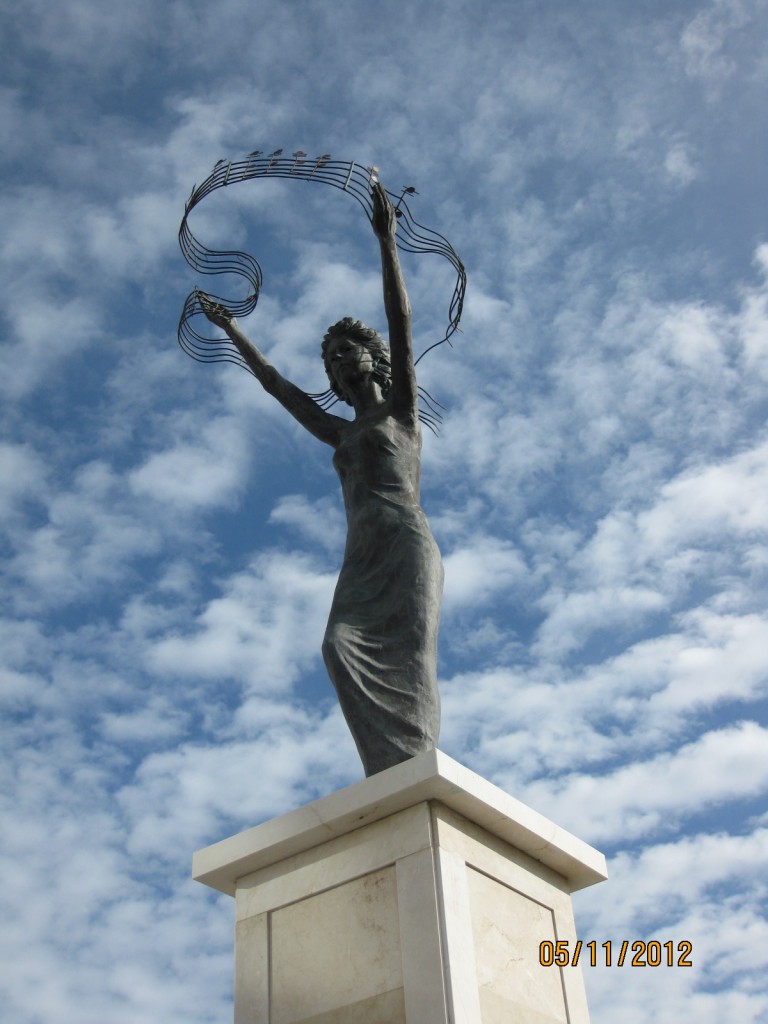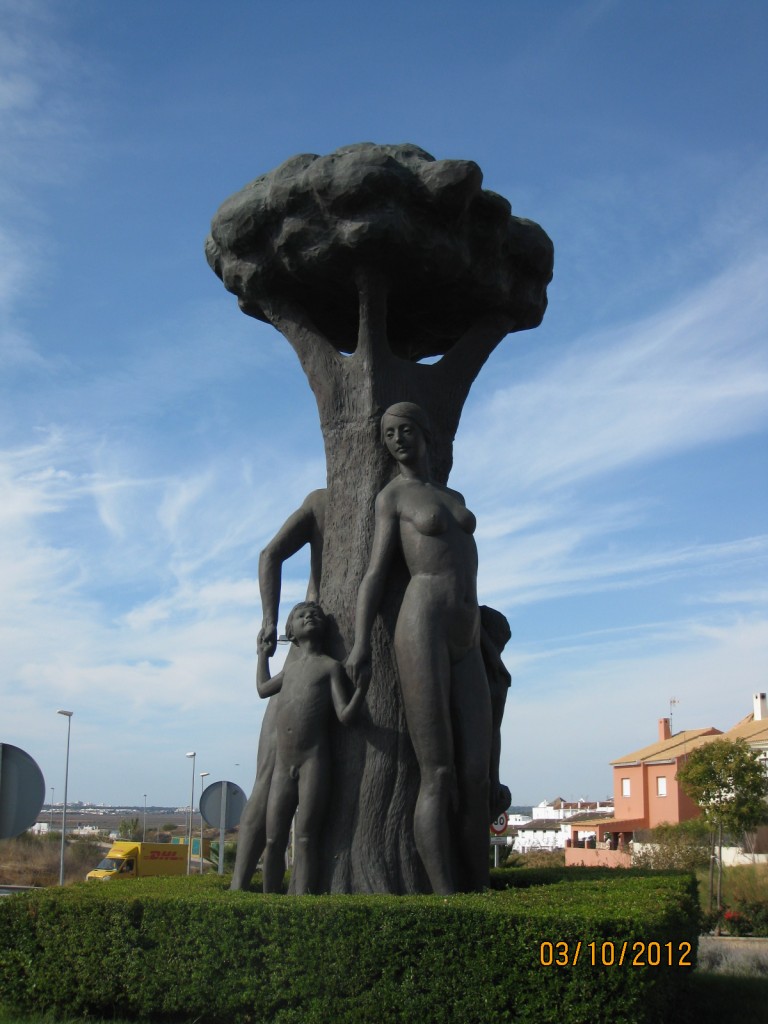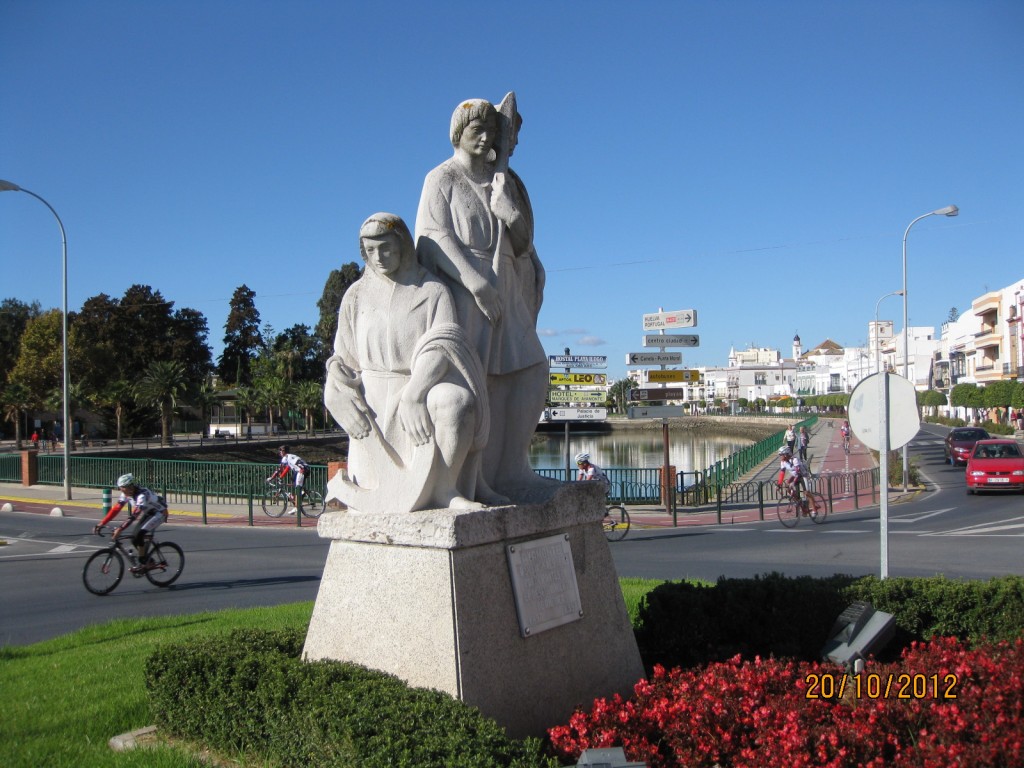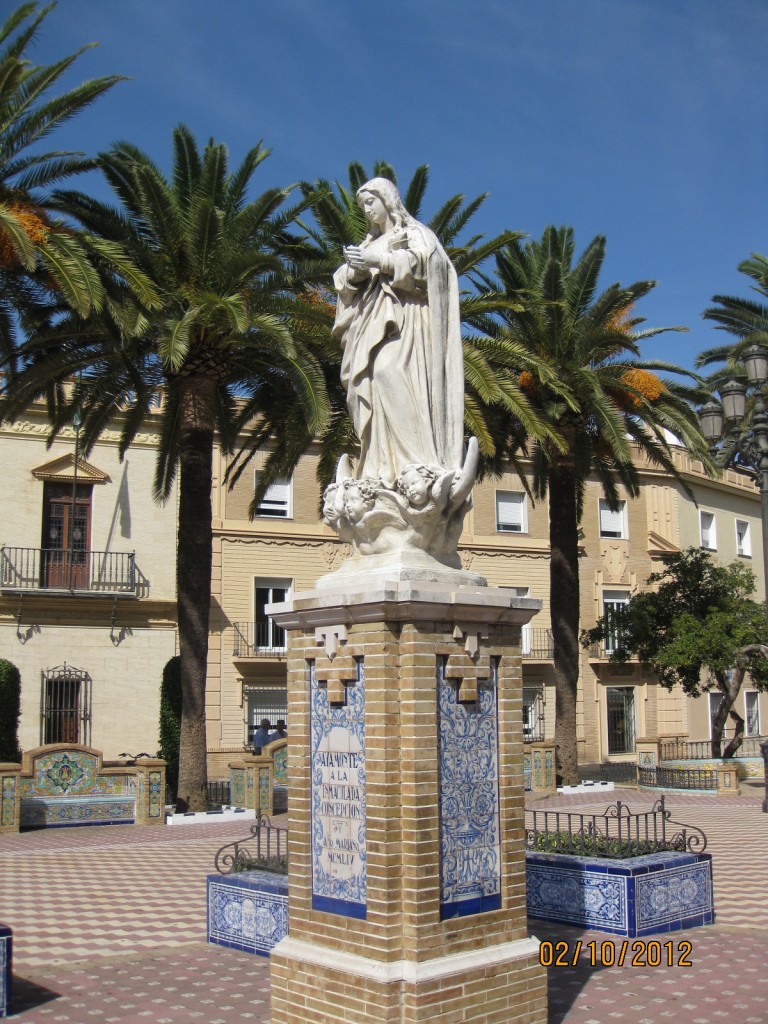Ayamonte, in my mind, has a touch of good and a smear of bad. On one hand, my dear friend Meag lived there for a year, and it’s impossible to think of the small city that shares a border with Portugal and not burst into giggles. But then again, I was once stuck there during a holiday when my bus to Faro was late, and I missed the last one to leave for Seville.
Still, reader Jill contacted me about sharing pictures of this seaside village, and I was happy to oblige. For a sleepy city, Ayamonte’s art patronage stands out.
Ayamonte is situated on the river Guadiana, which marks the border between Spain and Portugal. Historically it was of strategic importance and has always been associated with fishing and seafaring. The last twenty years have seen a growth in tourism, but it is often still dismissed as the end of nowhere! However, nothing could be further from the truth.

The Ayamontinos have a great loyalty to their town and its culture and traditions, from the devotion of Semana Santa, to the Music Festival in August and the patronal festival in September. It is a town where artists and sculptors have flourished. Even Joaquin Sorolla painted one of the fourteen panels commissioned for the Hispanic Society of America in Ayamonte, entitled La Pesca de Atun.
What has fascinated me about the artistic life of the town are the sculptures on roundabouts and in the squares. These are mainly modern, commissioned as part of the expansion and restoration of the town, but commemorating the history and traditions of the location. Statues associated with the past life of the town are those which remember the water carriers, the lime manufacturers and the fish conservers. Before the arrival of piped water the water carriers delivered fresh water.
The ‘caleros’ manufactured and transported the lime used to make the whitewash for the typical white buildings. Fish preserving was almost exclusively the domain of women, and still exists today on a much reduced scale on a modern industrial estate.
The association with sea faring is commemorated by a statue of sailors who joined Columbus’s voyage to the New World. Additionally there exists a statue of women awaiting the return of the fishing boats, though currently being restored after being damaged.
There are also religious statues prominent in the main square and park, as one would find in every Spanish town. Religious statuary is seen at its most historic and elaborate during Holy Week, when the statues – often the work of well known sculptors of the past – are carried through the town on the ‘pasos’.
Ayamonte even claims Santa Ángela de la Cruz as one of its own, as she founded a house of the Sisters of the Cross in the town in the late 1870’s and she too has her statue. Much broader concepts are celebrated too, such as the family and music.
I hope you have enjoyed this tour of the public art of the town, and will visit one day, when the red roses are in bloom to welcome you.
Jill is a retired teacher who lives part of the year in England and part in Ayamonte, Spain, as well as enjoying travel. Catch up with her on twitter, @mumjilly. If you’ve got photos to share of Southern Spain, please send them to sunshineandsiestas @ gmail . com, and check out my Facebook page for more of Andalusia and beyond.







